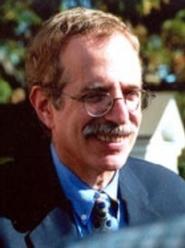
Police profiling is not a new phenomenon; in fact, profiling has been used to successfully identify criminals for decades. Yet “profiling,” in the modern world, is steeped in negative connotations and riddled with racial undertones. Milton Heumann, a professor of political science at Rutgers University, spoke on Nov. 7 about the current state of civic equality in New York City.
He touched on topics from his recent article in the Journal of the Professional Lawyer, “Philadelphia Lawyers: Policing Laws in Pennsylvania,” but he focused mainly on police profiling and stop-and-frisk procedures. The lecture was part of the Security Program sponsored by the Arthur Levitt Public Affairs Center, and supported by the Arthur Coleman Tuggle Lecture Fund.
To help the audience understand modern profiling, Heumann explained its laudable origin and subsequent mutation. Profilers, federal employees who create suspect sketches and compile a list of viable physical and psychological traits of the perpetrator, work closely with the police to catch criminals. As officers gain experience, they develop a knack for spotting the “symbolic assailant,” the type of individual likely to commit a certain crime. Unfortunately, in rookie officers, the rates of unwarranted stops based on race alone are much higher.
Statistically speaking, contraband is more likely to be found on a white citizen during a Stop-and-Frisk than it is on a black citizen. Yet, of the 3.5 million stops made in New York City between 2004 and 2010, more than half were non-white, and only 12 percent of those individuals were arrested. This dramatic figure exemplifies the prejudice legally permitted through ‘reasonable suspicion,’ which Heumann describes, very technically, as “less than probable cause but more than a hunch.” Reasonable suspicion is intentionally kept vague to safeguard against lawsuits of undue search and seizure.
Unsurprisingly, race does play an integral role in apprehending the proper suspect, as Heumann points out. However, the rate of false-positives, stopping an innocent person due to “reasonable suspicion,” is high among minority populations. The social price of false-positives is high and often leads to a mistrust of law enforcement. Racial profiling is certainly not seen as just, by the majority of Americans; yet, as the potential danger level escalates (e.g. airport security) the price of racial profiling is socially viewed as less significant.
It’s logical that a higher rate of stop-and-frisk procedures would correlate to an increase in contraband seizures and arrests. However, because New York has recently come under public scrutiny for high rates of racial profiling, they have worked on decreasing their stops. They are currently down by 50 percent compared with last year, and, contrary to predictions, the city’s crime rate is still decreasing.
Heumann points out that the ineffectiveness of current procedures, such as preventative patrol, does call for change. To cope with this, some cities have instituted wearable wireless cameras while others are calling for legal reform.
Although policy changes set forth by the Supreme Court could be helpful, Heumann finds it naïve to believe that a new law could bring about a profound social change by itself.
Although he is not sure of the next step, Heumann believes that setting an example by firing officers who have been racially profiling will dramatically cut back the number of these incidences. Heumann also proposed putting seasoned officers in “hot spot” crime areas, believing that their experience in correctly identifying the symbolic assailant will also decrease the number of false-positives from racial profiling.
Posted November 8, 2013
